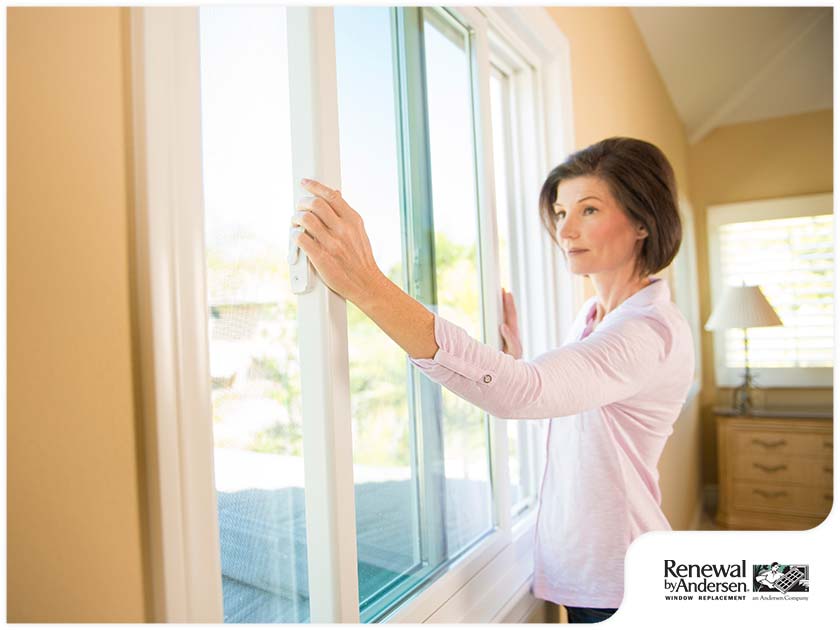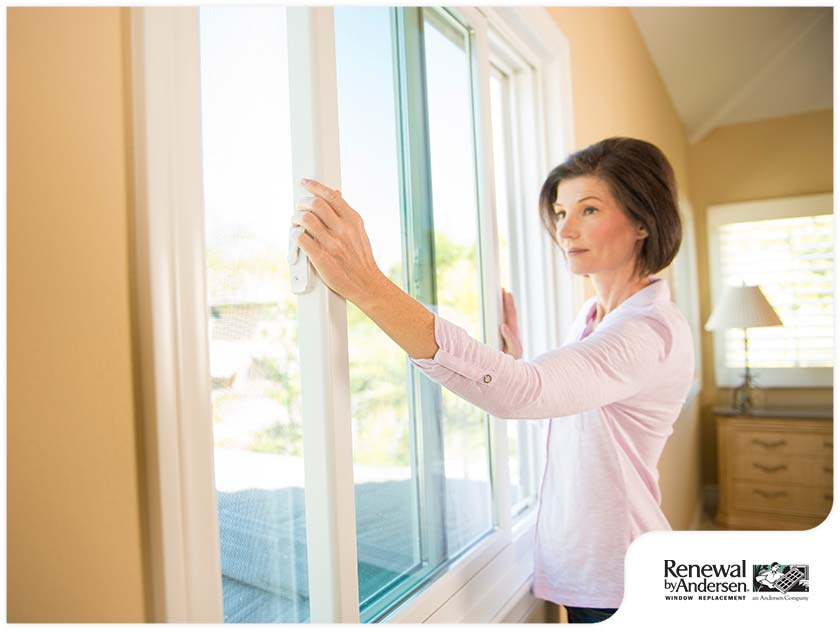MENU


Window replacement allows you to update your home’s appearance and improve its energy efficiency. One of the important factors to consider for any home upgrade is energy savings, which is why it pays to make careful decisions when planning this particular project. After all, you want your replacement window units to perform as expected.

To assess your replacement windows’ energy efficiency, you have to check their energy performance metrics. In doing so, you can effectively compare between products and select the ones that best suit your energy-saving needs. In this blog, Renewal by Andersen® of Knoxville, your local source of replacement windows and patio doors, takes a closer look at the various metrics to use when assessing whole-window performance, as well as the implementing authorities behind them.
The overall energy performance and efficiency of replacement windows are based on heat loss and gain. These happen through direct conduction through the window, the radiation of heat into and out of the house, and air leakage through and around it. These are quantified using different metrics or ratings, which are discussed further below:
The U-factor of a window assembly—glazing, window frame and spacers that separate the glazing panels— is an indication of its insulating properties. It is a metric that measures how effectively your new units can keep heat from escaping your home. Windows with the best resistance to heat flow, and thus, the best insulating qualities, have a low U-factor. Conversely, those with high U-factor ratings tend to be less efficient and have a poor insulating ability. High-performance, energy-efficient double-pane windows can have a U-factor of 0.30 or lower. Some triple-pane ones can achieve ratings as low as 0.15.
The SHGC, or solar heat gain coefficient, is a metric that describes the ratio of incident solar radiation admitted through a window, both directly transmitted and absorbed and subsequently released inward. Its value is expressed as a number between 0 to 1, with the latter indicating the maximum amount of solar heat allowed through a window. Investing in windows with lower SHGC helps lower your cooling bills. However, you have to consider the glass that comes with the replacement units as well because it plays a vital role in blocking heat transfer.
The ability of glazing in windows or sliding doors to transmit sunlight into a home can be measured and rated according to visible transmittance or VT. It is a ratio of the visible spectrum of sunlight passing through the unit. This is separate from the SHGC, since many energy-efficient windows have spectrally selective glass coatings that can allow various amounts of visible, infrared, and ultraviolet light. The value range of VT is similar to the SHGC—0 to 1, with the latter indicating the highest amount of visible light that can pass through the window. Take this metric into account if you want to maximize your home’s daylighting requirements or reduce glare in your interior.
Heat loss and gain occur by infiltration through cracks in the entire window as indicated by its air leakage (AL) rating. This metric, expressed in cubic feet per minute per square foot, measures the rate of air movement around the window in the presence of a specific pressure difference across it. A low AL rating means that the product is less likely to let air inside your home, which can help prevent thermal instability. To ensure an airtight seal, make sure that you choose a durable framing material for your windows. Air leakage is also dependent on how the units are installed.
The metrics used to tell a window’s energy efficiency were devised by the National Fenestration Rating Council (NFRC). It is a nonprofit organization behind the implementation of a uniform and independent rating and labeling system for the energy performance of building components, including replacement windows and doors.
Before you purchase new windows, make sure to look for the NFRC label. With this, you can narrow down the most energy-efficient replacement units from the rest, all while ensuring your investment can help boost your home’s energy savings.
Another label to look for is the one from ENERGY STAR®. It is a voluntary program of the U.S. Environmental Protection Agency (EPA) and the Department of Energy (DOE) that determines and promotes energy-efficient products like replacement windows, HVAC systems and other appliances.
If you see a window unit that has the white-and-blue label from ENERGY STAR, it means that the product has met the federal government’s stringent energy performance standards. Note, however, that the program bases its qualification only on U-factor and SHGC ratings. The label also highlights the areas across the country in which the window unit is certified by ENERGY STAR.
Other factors must be considered when buying replacement windows aside from the NFRC and ENERGY STAR labels. A durable framing material, for example, can affect the replacement units’ longevity and how they fare on the performance metrics. Also, see to it that the windows are fitted with low-emissivity (low-E) coatings. It is a feature that helps reduce heat transfer in your home and ensures a more thermally comfortable interior without the extra cooling costs.
The window style should also be given utmost importance. Double-hung and casement windows, for instance, promote ventilation, while bay and bow windows let adequate sunlight indoors due to their large glass area. Non-operable picture windows provide an airtight seal and prevent air from passing through them.
Of course, hiring a reliable contractor helps ensure the superior energy performance and efficiency of your investment. The right team for the job should install your replacement windows in accordance with quality standards set by the manufacturer. This might seem as big a decision as choosing the right windows for your home, but with Renewal by Andersen of Knoxville, you get the best of both worlds.
Choosing Renewal by Andersen of Knoxville means choosing top-of-the-line products and outstanding customer service. We offer the brand’s full selection of both traditional and specialty windows, as well as replacement doors. We understand that each homeowner has a unique sense of style and a unique set of needs, and that is why we provided so many high-quality options.
Our experienced design consultants will work closely with you to ensure that you receive precisely the project that you envisioned. Our objective is to provide you with the best home improvement experience possible. Call us today at (866) 609-5033 or fill out our contact form to schedule a free, no-obligation consultation. We serve Tennessee homeowners, including those living in and around Maryville, TN.